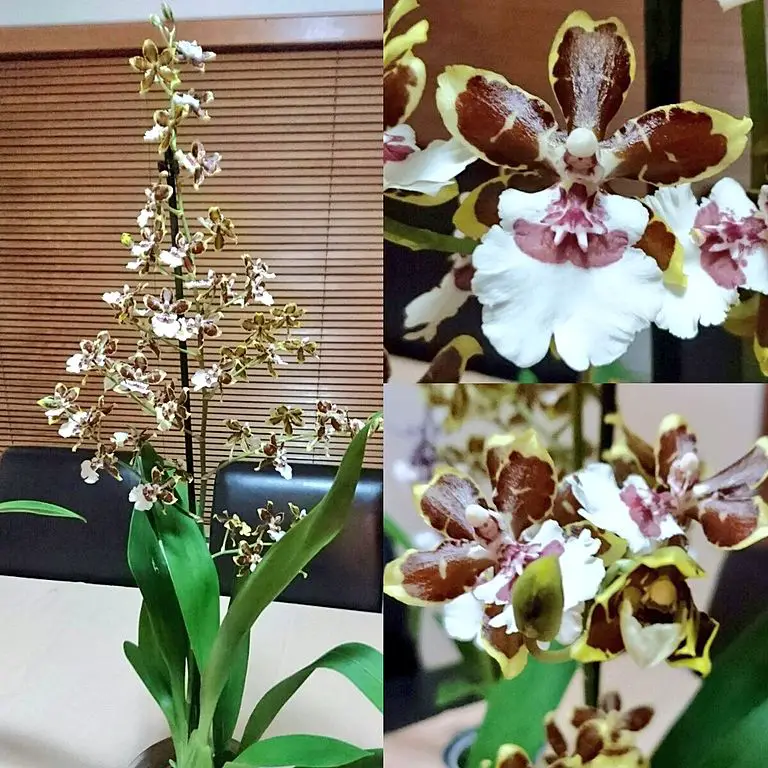
Discover the secrets of Oncostele Orchid Care with our friendly guide. Learn how to nurture these stunning blooms for a vibrant indoor garden.
Oncostele Orchid Care
Key Takeaways:
Welcome to the world of Oncostele Orchid Care, where the beauty of these captivating blooms meets simple, practical advice.
Whether you’re a seasoned gardener or a budding enthusiast, this guide is your key to unlocking the vibrant potential of Oncostele orchids in your home.
Oncostele Orchid Care
Oncostele orchids, known for their striking blooms and unique appearance, are a popular choice among orchid enthusiasts.
Proper care is essential for these beautiful plants to thrive and bloom.
In this comprehensive guide, we’ll cover everything you need to know about Oncostele orchid care, from ideal growing conditions to common problems and advanced techniques.
Oncostele, abbreviated Ons., is a hybrid genus of orchids, used for greges containing at least one ancestor species from the genera Oncidium (Onc.) and Rhynchostele (Rst.).[1] The nothogenus was defined in 2003 by J. M. H. Shaw.[2] Wikipedia
Ideal Growing Conditions for Oncostele Orchids
Light and Temperature Requirements
Oncostele orchids prefer bright, indirect sunlight. A west-facing window with filtered light is ideal.
Protect them from direct sunlight to prevent leaf burn and fading colors.
Consistent lighting and temperatures are crucial, as drastic changes can hinder blooming.
The ideal temperature range for Oncostele orchids is between 60-85°F during the day and slightly cooler at night.
Watering and Humidity Needs
These orchids require regular watering, allowing the potting medium to approach dryness between waterings.
Overwatering can be detrimental, leading to root rot.
To increase humidity, place the pot on a tray filled with pebbles and water or use a humidifier.
Misting the orchid regularly can also help maintain the required moisture levels.
Fertilizing and Potting Techniques
Oncostele orchids thrive in a well-drained, aerated medium that retains enough moisture.
A mix of bark, perlite, sphagnum moss, and charcoal is recommended. See orchid soil mixes on Amazon
Fertilize with a 20-20-20 or 30-10-10 orchid fertilizer at half-strength once a month during active growth.
Repot every two years into a slightly larger pot to prevent the orchid from becoming pot-bound.
Common Problems and Pests in Oncostele Orchids
Overwatering and Underwatering
Both overwatering and underwatering can pose problems.
Ensure proper drainage and monitor the moisture levels in the soil to prevent these issues.
Signs of overwatering include root rot while underwatering can lead to wrinkled, accordion-like leaves.
Sunburn and Leaf Scorch
Protect Oncostele orchids from direct sunlight to prevent sunburn and leaf scorch.
Use a sheer curtain to filter the light if necessary.
Adjust the plant’s position to ensure it receives the right amount of light without getting damaged.
Pests and Diseases
Watch out for scale insects, spider mites, mealybugs, slugs, snails, and fungal diseases.
Maintain proper watering and fertilizing techniques and provide adequate air circulation to prevent these issues.
Treat any infestations promptly with appropriate organic insecticides or fungicides.
Basic Oncostele Orchid Care Techniques for Beginners
Potting and Repotting
Choose a potting medium that provides good drainage and air circulation.
Repot Oncostele orchids when they outgrow their current container or every two years, during active growth periods.
Be gentle when repotting to avoid damaging the roots.
Propagation and Division
Divide Oncostele orchids during repotting when they have developed too many pseudobulbs.
Make sure each division has several healthy roots and pseudobulbs.
Use sterile pruning shears to prevent the spread of diseases.
Controlling Blooming Periods
To control blooming periods, manipulate the orchid’s exposure to light and temperature.
Oncostele orchids require bright, filtered light and intermediate temperatures to initiate blooming.
Adjust the light and temperature conditions to encourage flower spike development.
Advanced Techniques for Oncostele Orchid Care
Intergeneric Orchid Care
Intergeneric orchids, created from crossing different genera, require specialized care.
Understand the specific needs of each parent plant involved in the hybridization process and provide a balanced blend of light, temperature, humidity, water, and fertilizer.
Using Artificial Light
For indoor Oncostele orchids, artificial light can be used to supplement natural light.
LED lights are the best option, providing the necessary light spectrum for growth and blooming.
Ensure the light is bright but filtered to prevent damage to the leaves.
Initiating Spike Growth
To initiate spike growth, ensure your Oncostele orchid receives the right amount of light and temperature.
Some hybrids and species may require increased exposure to bright filtered light to assist in spike initiation.
Monitor the plant’s response and adjust the conditions accordingly.
Conclusion
Caring for Oncostele orchids requires attention to detail and an understanding of their specific needs.
By providing the right growing conditions, monitoring for common problems, and applying advanced care techniques, you can enjoy the beautiful blooms of these unique orchids for years to come.
Remember, patience and consistency are key to successful orchid care.
Read more: Are Orchids Hard To Take Care Of? Easy Growth Formula
For more detailed information on Oncostele orchid care, visit Gardening Wiz and OrchidWeb for more tips and advice on growing and caring for these beautiful plants. Happy gardening!
Learn more about the different orchid types
This post contains affiliate links.


